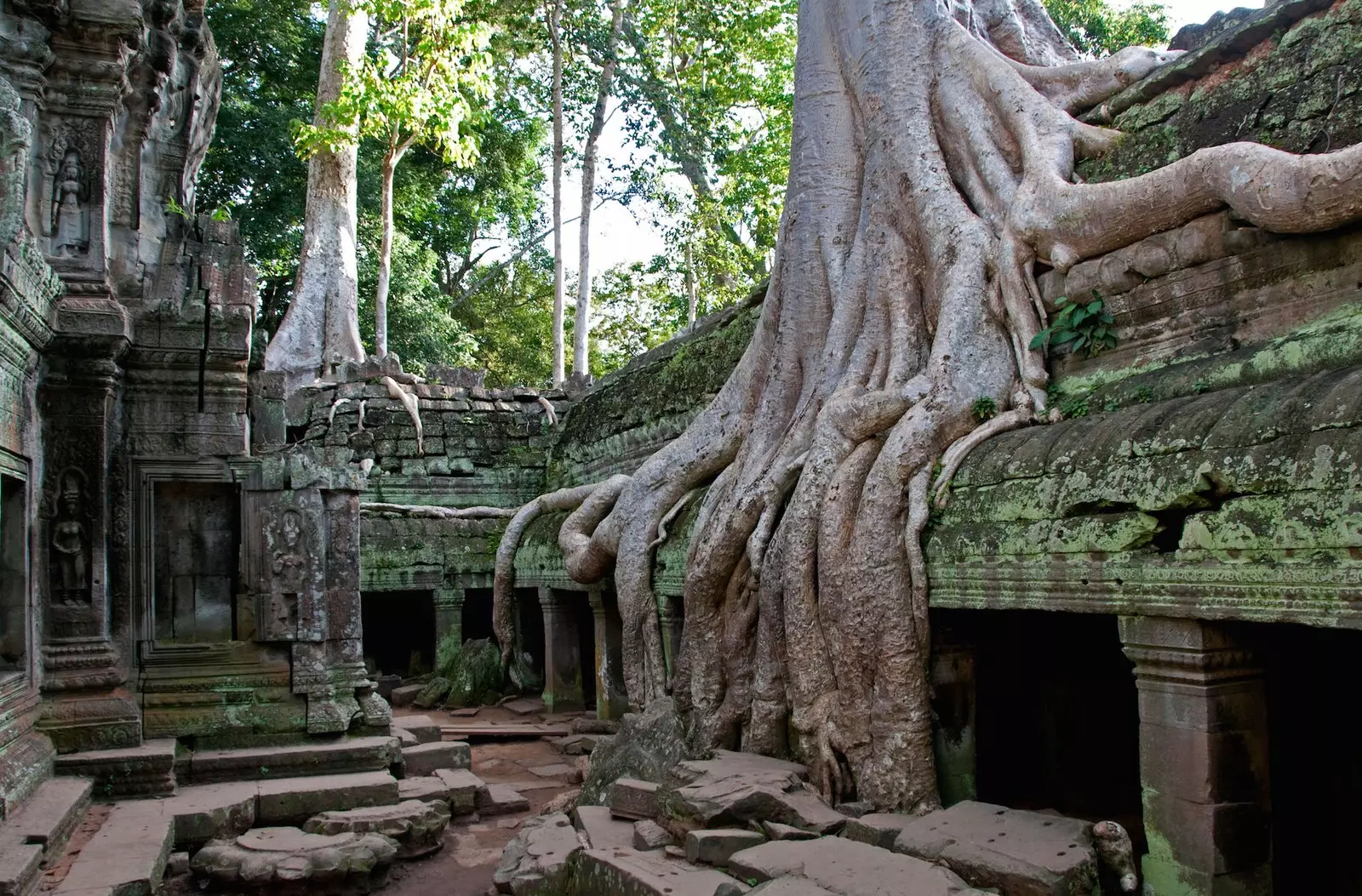
Why do we like ruins so much?
THE RUINS APPEAL TO OUR SENSES
Like any other work of art, ** the ruins are objects of contemplation **. This value jumps to the fore if we leave aside its historical value. Disconnection comes more easily in far away places They are not part of our culture.
In angkor , before the buildings engulfed by vegetation , the notions we have of his past are silent . We enter the temples from aesthetics. The vast symmetry of the structures, the monumental faces, the reliefs that cover the walls, compose a single piece that extends into a jungle setting.
“The landscape of desolation is landscape. There is beauty in the ruins.” ― Regarding the pain of others, Susan Sontag.
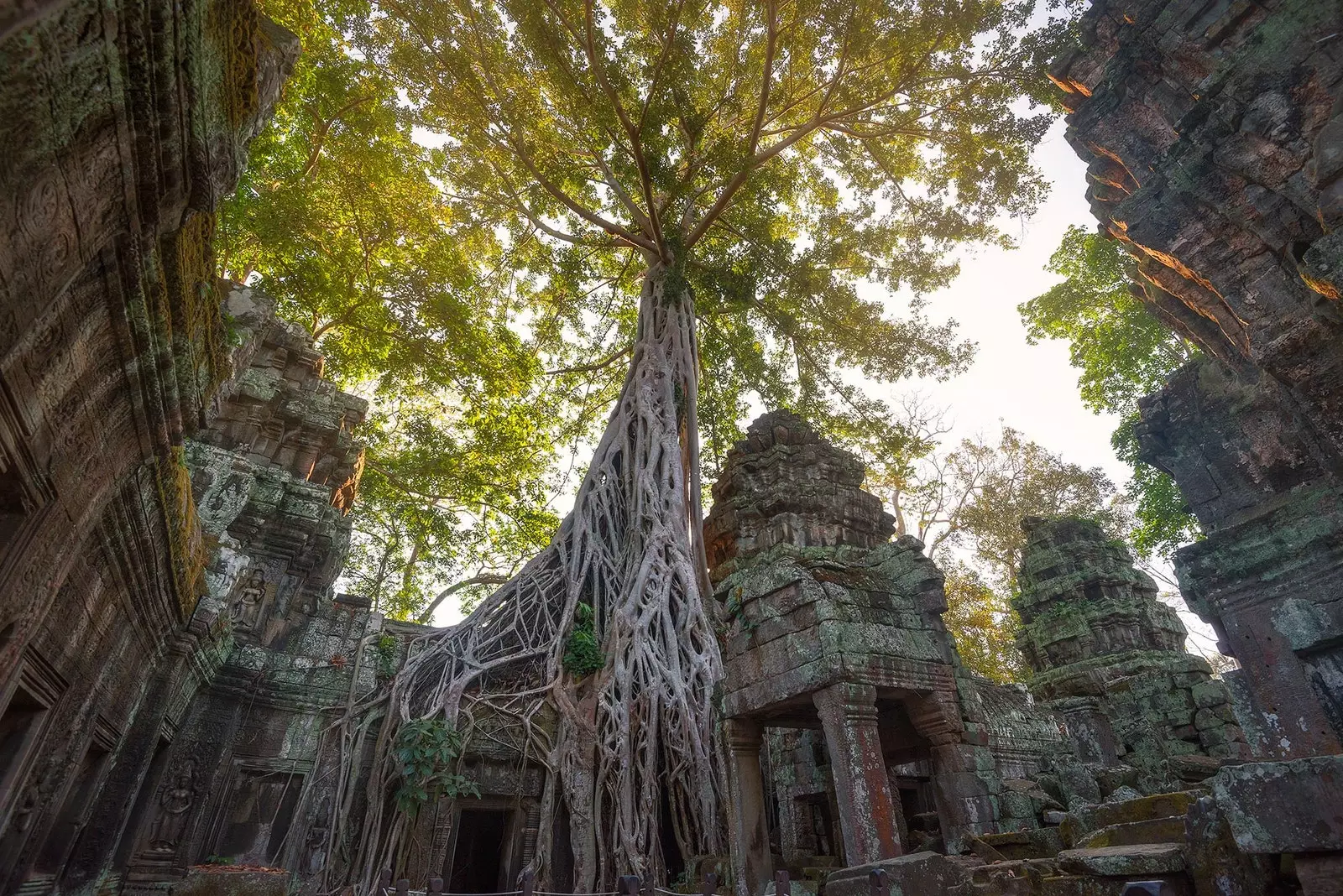
Ta Prohm at Angkor Wat
RUINS ARE VISUAL HISTORY
The ruins survive as witnesses of an era. In a museum we can see a marble sculpture representing a satyr. The architecture delimits the space that satyr occupied in ancient times.
Those who lived in the buildings that are now ruins worshiped their gods there, cooked, ate, walked and slept. The archaeological investigation and the literary sources of the time tell us how they did it. There are gaps in the story those gaps are filled by the imagination.
Nowhere is that trace of life appreciated as in the Roman cities buried by the eruption of Vesuvius . From a visit to Pompeii the streets, the graffiti and little else remain: the avalanche of cruise passengers nullifies any attempt at evocation. Privacy is kept safe in Herculaneum. The scale maintains the impression of a seaside town. The courtyards decorated with mosaic fountains, the small, family-run baths.
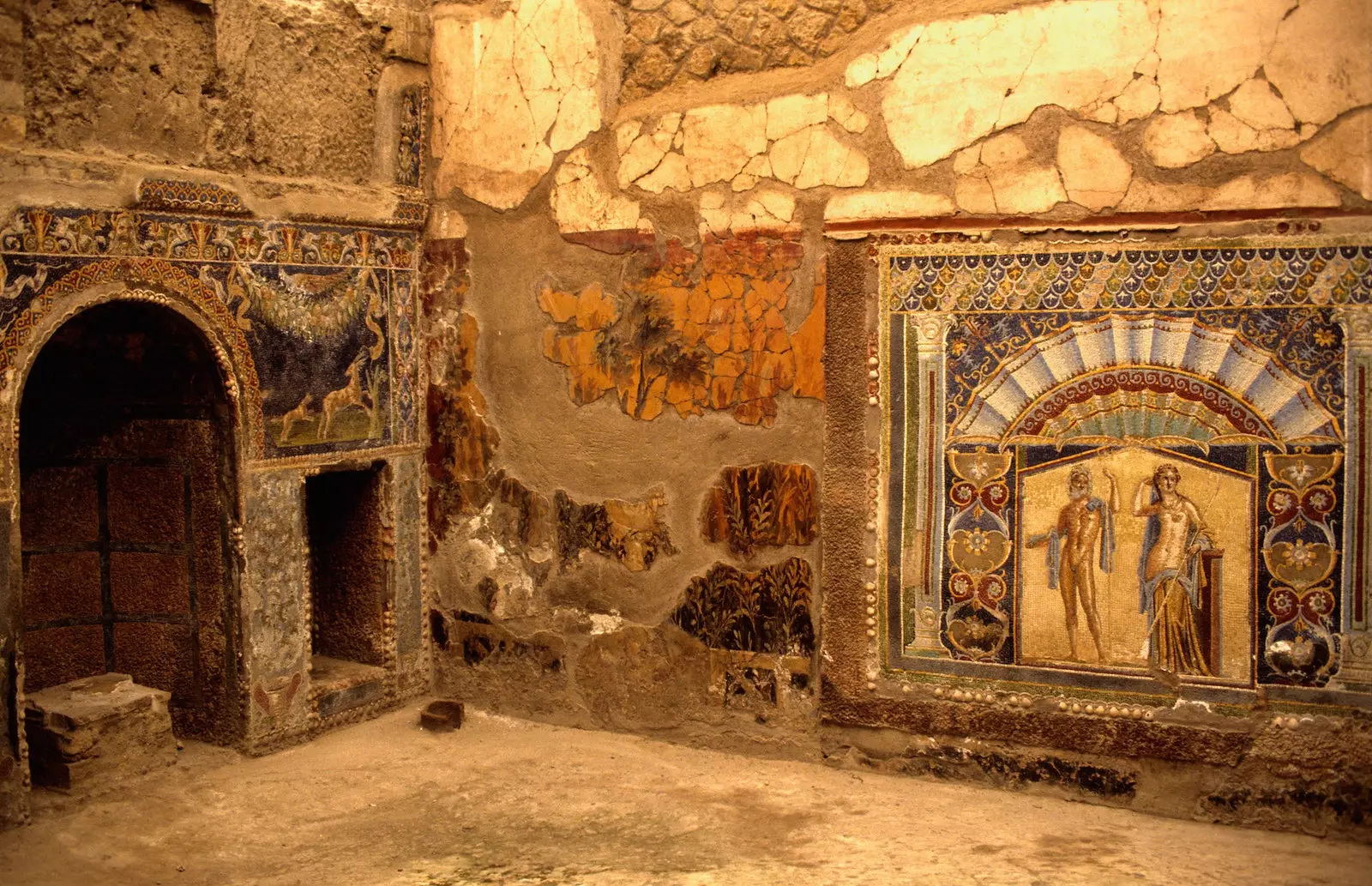
Pompeii, the great sample
But it is in the Villa of Poppaea, at Oplontis , where the spirit of a faded past . In its excavation, the gestures of the burned servants were recovered, through plaster casts, but also the shutters ajar in a bedroom, the latrines, the frescoes that cover the walls, the swimming pool.
“If poetry represents what a people has thought and felt, architecture is what their hands have touched , what has built his strength, what has contemplated his gaze, day by day.” ― The seven lamps of architecture, John Ruskin.
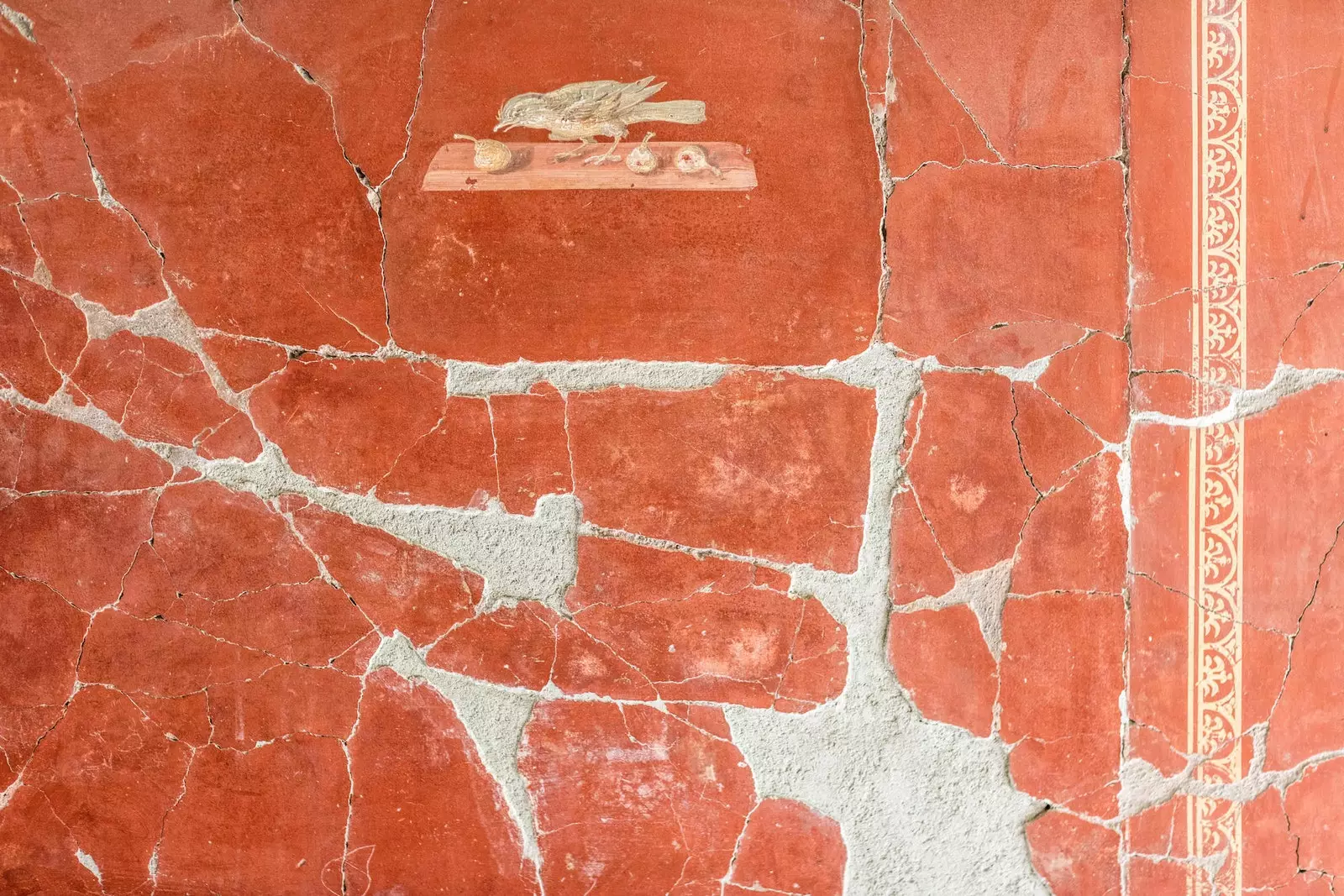
Villa of Poppaea, at Oplontis
RUINS ARE TIME AND MEMORY
In Ozymandias , a poem that became famous after its appearance in the series Breaking Bad, Shelley tells of a traveler who finds a colossus felled in a distant country. Next to it is a pedestal with an inscription announcing the splendor of the city created by a great king. But around him there are only ruins.
The verses give shape to an image: the time that demolishes power, that shows the emptiness of vanity. The symbol materializes in the ruins, in what was and is no longer.
It is said that the poem arose after contemplating a Ramses II statue in the British Museum, but much more evocative than this monumental sculpture is the funerary temple of the pharaoh, the Ramesseum, in Thebes . Its remains faithfully reproduce the landscape described by Shelley. There, the large columns and the remains of monumental figures They lie broken in the desert.
“Nothing is left by his side. Around the decay / of these colossal ruins, infinite and bare / stretch, in the distance, the lonely and flat sands.” ― Ozymandias, Shelly.
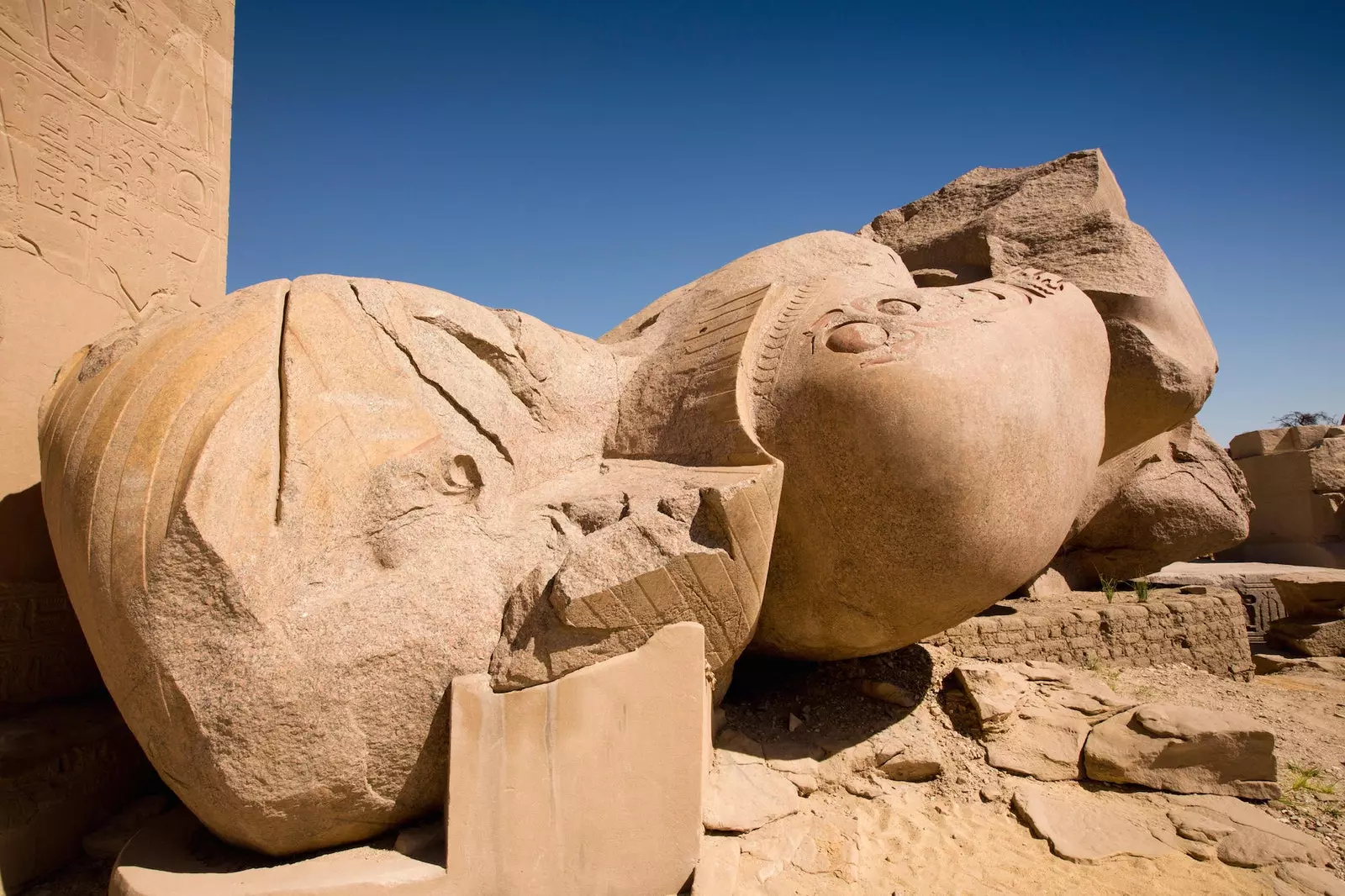
Ramesseum, in Thebes
THE RUINS TALK TO US ABOUT OURSELVES
Poetry has also used ruins as a metaphor for a state of life. When walking through the Jumièges Abbey , in Normandy, the image emerges of a stripped and dejected body.
The façade remains solid, flanked by two towers. But when crossing the cover, the columns of the ship rise towards the void. collapsed vaults, arcades that open in solitary walls, rooms that have lost meaning, function, coherence.
The trees lean over the buttresses and the grass covers what was the pavement. Abandonment and decadence. Two ideas highly appreciated by the romantic traveler.
"It is beautiful to contemplate the ruins of cities, but it is even more beautiful to contemplate the ruins of men." ― The songs of Maldoror, Count of Lautréamont.
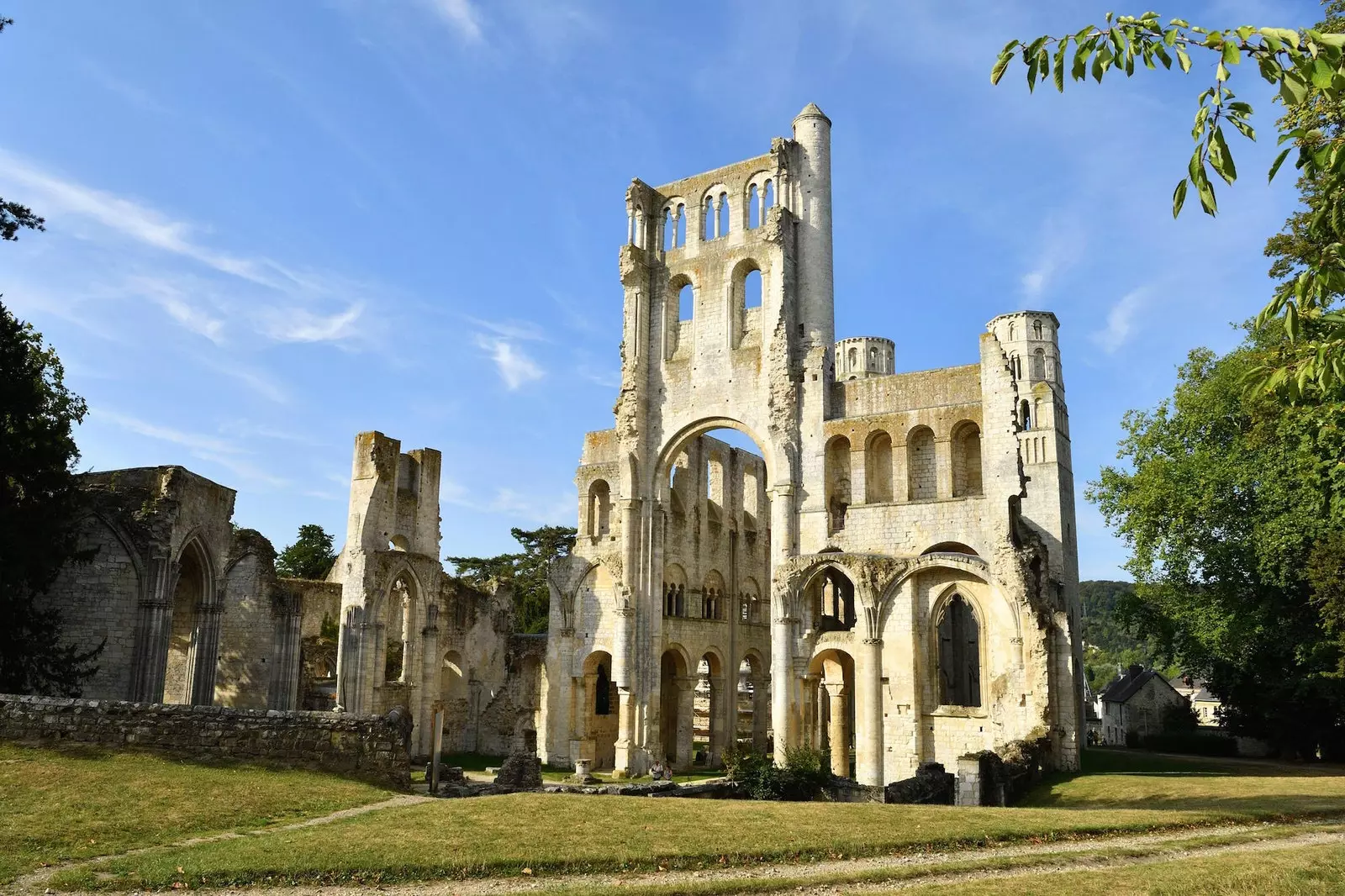
Jumièges Abbey
The ruins speak of life , and if it leads to a fall, it also marks a rebirth. Architecture is space, and that space, when abandoned, does not go out. Becomes.
It is not the destruction that gives shape to the ruin, since this would only lead to the quarry, as it happened until the 18th century. Ruin is created by our gaze. And that gaze shapes a new object, interpreted as a place of contemplation, as a tunnel to a bygone era or as a metaphor for a state of mind.
Redemption, that very cinematographic concept, so from netflix , is also in the ruins.
“It was the thirst and the hunger, and you were the fruit / It was the mourning and the ruins, and you were the miracle.” ― Twenty love poems and a desperate song, Pablo Neruda.
